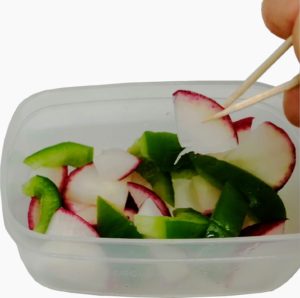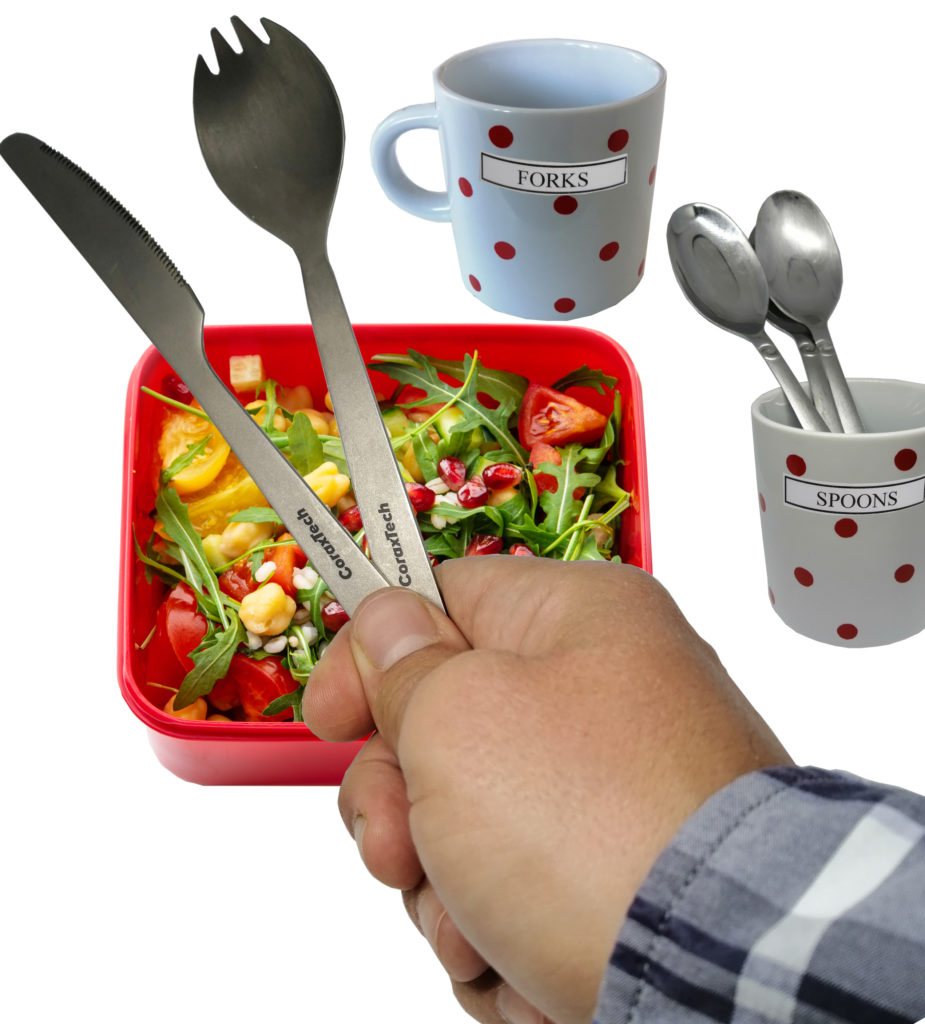Did you end up eating salad with a spoon today? Or stirring coffee with a knife?

How about using toothpicks just to have lunch? Missing cutlery drives (undesired) novelty.

The problem is so big an academic study was done. The study focused on teaspoons and the result is fascinating: for a city with a 2.5 million workforce (about 5 million inhabitants) there are around 18 million teaspoons going missing per year. Add other cutlery types to that number and you may be looking at 3-4 times that number.
So now you know: cutlery disappears gradually and you feel there's none available unless it's the one lying around in the kitchen sink, still unwashed. What can you do about it?
1) Get HR to allocate budget for a sustainable rate of cutlery for the whole office
How much budget is needed? Your office may have it's own specifics. The study mentioned before concluded around 75$ per year for the 140 people office measured. You could use similar budgeting for all other types of cutlery in your office: forks, knives, table spoons (chopsticks?) and budget 4x75$ per 140 persons per year.
2) Divide cutlery use within smaller team rooms
A slower disappearance rate in team rooms than the communal room was observed. Owning more and smaller lunch rooms improves availability rate. Some offices can use partitions and turn new smaller spaces into little kitchenettes. Talking to your HR may yield a good result here.
3) Use your own, specialized cutlery
No HR interaction needed here but comes at a cost. But specialized sets bring good value for money. A compact or abundant titanium cutlery set can kill germs for example. Other cutlery can improve taste. Many last a lifetime.
What suggestion will you try? Do you have other suggestions too?
Comment below and share this article with anyone who may be helped by these suggestions.
References:
1) Lim, Megan & Hellard, Margaret & Aitken, Campbell. (2006). The case of the disappearing teaspoons: Longitudinal cohort study of the displacement of teaspoons in an Australian research institute. BMJ (Clinical research ed.). 331. 1498-500. 10.1136/bmj.331.7531.1498.
2) Yang‐Hwei Tsuang Jui‐Sheng Sun Yu‐Chen Huang Chung‐Hsin Lu Walter Hong‐Shong Chang Chien‐Che Wang (2008). Studies of Photokilling of Bacteria Using Titanium Dioxide Nanoparticles. https://doi.org/10.1111/j.1525-1594.2007.00530.x


